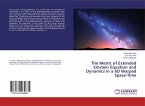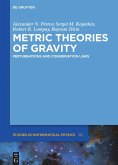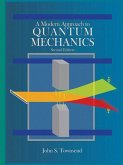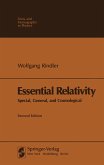A new alternative assertion in warp field theory is introduced based on a newly formulated space-time metric or line element. The space-time metric to be introduced is defined on a theoretical warp field that is the result of a gravitational curvature in the geometry of space-time that is generated by accelerated particles. It is mathematically shown that particles accelerated to the verge of the velocity of light with an acceleration value that is equal to multiples of the speed of light per unit time (although the particles never exceed the speed of light in observance of relativity) are treated as particles of increased mass by space-time and therefore generate a gravitational field. Thus, the generated gravity/warp field bends and compresses space-time towards a hypothetical vehicle which travels at a given sub light velocity within the field. Hence, spatial distance is sufficiently compressed allowing the vehicle at a sub-light velocity to transit a distance in a comparatively short time span and a faster relative velocity. As with the Alcubierre metric, the new formulation is shown to be a solution to Einstein's field equations relating it to general relativity.








